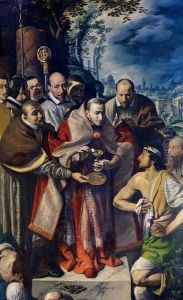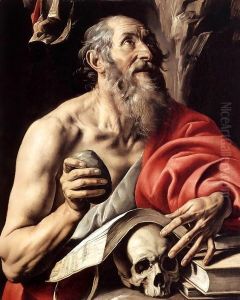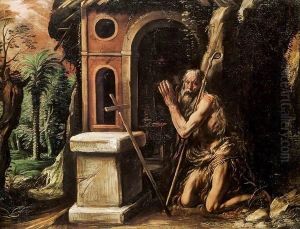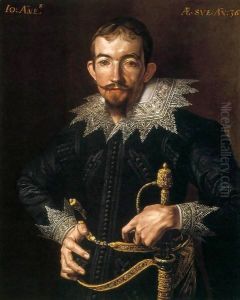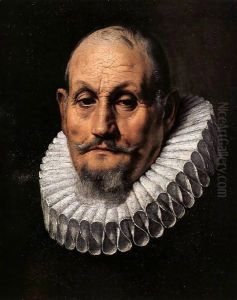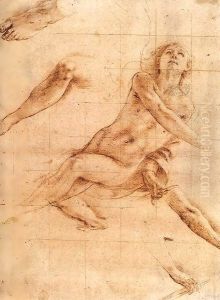Tanzio da Varallo Paintings
Tanzio da Varallo, whose real name was Antonio D'Enrico, was an Italian painter born in the late 16th century, with his birth year often cited as between 1575 and 1580 in Alagna, near Varallo Sesia, Piedmont. He is best known for his significant contribution to the Baroque painting movement, which was characterized by its dramatic use of color, light, and shadow. Tanzio's work was heavily influenced by his early experiences in Lombardy and his subsequent travels, which included a pivotal journey to Rome. This trip exposed him to the works of Caravaggio, whose style had a lasting impact on Tanzio's approach to painting, particularly in his use of chiaroscuro and his focus on naturalism.
Tanzio's career was marked by his versatility across religious, mythological, and secular themes, though he is most revered for his religious compositions, which often depicted scenes with intense emotional expressions and dramatic lighting effects. His works are notable for their vivid detail, dynamic compositions, and the emotional depth of their subjects. Tanzio was also involved in the decoration of the Sacro Monte di Varallo, a complex of chapels in his hometown, which is considered one of his major contributions to the Italian Baroque.
Despite his talent, Tanzio da Varallo remains somewhat obscure in the annals of art history, overshadowed by his contemporaries. However, his work has been reevaluated in recent years, with art historians recognizing his role in bridging the late Renaissance and early Baroque periods. Tanzio's paintings can be found in various Italian churches and museums, testament to his skill and versatility as an artist.
Tanzio da Varallo died in 1632 or 1633 in Varallo Sesia. His legacy lives on through his contributions to the development of Baroque painting, and his works continue to be studied for their emotional intensity and technical mastery. Despite the lack of extensive documentation on his life, Tanzio's art represents a significant chapter in the history of Italian painting, offering insight into the transition from Mannerism to the more emotionally charged and visually dynamic Baroque style.
